Lima is the capital and the largest city of Peru. It is located in the valleys of the Chillón, Rímac and Lurín rivers, in the central coastal part of the country, overlooking the Pacific Ocean. Together with the seaport of Callao, it forms a contiguous urban area known as the Lima Metropolitan Area. With a population of almost 10 million, Lima is the most populous metropolitan area of Peru, and the third largest city in the Americas (as defined by “city proper”).
Lima was founded by Spanish conquistador Francisco Pizarro on January 18, 1535, as Ciudad de los Reyes. It became the capital and most important city in the Spanish Viceroyalty of Peru. Following the Peruvian War of Independence, it became the capital of the Republic of Peru. Today, around one-third of the Peruvian population lives in the metropolitan area.
Lima is home to one of the oldest higher learning institutions in the New World. The National University of San Marcos, founded on May 12 of 1551, during Spanish colonial regime, is the oldest continuously functioning university in the Americas.
In October 2013, Lima was chosen in a ceremony in Toronto to host the 2019 Pan American Games. It also hosted the 2014 United Nations Climate Change Conference in December of that year.
 Lima’s climate is in transition between mild and warm, despite being located in the tropics and in a desert, Lima’s proximity to the cool waters of the Pacific Ocean leads to temperatures much cooler than those expected for a tropical desert, and can be classified as a mild desert climate (Köppen: BWn). It is neither cold nor very hot. Temperatures rarely fall below 14 °C (57 °F) or rise above 29 °C (84 °F) throughout the entire year. Two distinct seasons can be identified: summer, from December through April; and winter from June through October. May and November are generally transition months, with the warm-to-cool weather transition being more dramatic.
Lima’s climate is in transition between mild and warm, despite being located in the tropics and in a desert, Lima’s proximity to the cool waters of the Pacific Ocean leads to temperatures much cooler than those expected for a tropical desert, and can be classified as a mild desert climate (Köppen: BWn). It is neither cold nor very hot. Temperatures rarely fall below 14 °C (57 °F) or rise above 29 °C (84 °F) throughout the entire year. Two distinct seasons can be identified: summer, from December through April; and winter from June through October. May and November are generally transition months, with the warm-to-cool weather transition being more dramatic.
Summers are warm, humid, and sunny. Daily temperatures oscillate between lows of 18 °C (64 °F) to 22 °C (72 °F), and highs of 24 °C (75 °F) to 29 °C (84 °F). Skies are generally cloud free, especially during daytime. Occasional coastal fogs on some mornings and high clouds in some afternoons and evenings can be present. Summer sunsets are well known for being colorful. As such, they have been labeled by the locals as “cielo de brujas” (Spanish for “sky of witches”), since the sky commonly turns shades of orange, pink and red around 7 pm. Winter weather is dramatically different. Gray skies, breezy conditions, high humidity and cool temperatures prevail. Long (1-week or more) stretches of dark overcast skies are not uncommon. Persistent morning drizzle occurs occasionally from June through September, coating the streets with a thin layer of water that generally dries up by early afternoon. Winter temperatures vary little between day and night. They range from lows of 14 °C (57 °F) to 16 °C (61 °F) and highs of 16 °C (61 °F) to 19 °C (66 °F), rarely exceeding 20 °C (68 °F) except in the easternmost districts.
Relative humidity is always very high, particularly in the mornings. High humidity produces brief morning fog in the early summer and a usually persistent low cloud deck during the winter (generally developing in May and persisting all the way into late November or even early December). Predominant onshore flow makes the Lima area one of the cloudiest among the entire Peruvian coast. Lima has only 1284 hours of sunshine a year, 28.6 hours in July and 179.1 hours in January, exceptionally little for the latitude. Winter cloudiness prompts locals to seek for sunshine in Andean valleys located at elevations generally above 500 meters above sea level.
While relative humidity is high, rainfall is very low due to strong atmospheric stability. The severely low rainfall impacts on water supply in the city, which originates from wells and from rivers that flow from the Andes. Inland districts receive anywhere between 1 to 6 cm (2.4 in) of rainfall per year, which accumulates mainly during the winter months. Coastal districts receive only 1 to 3 cm (1.2 in). As previously mentioned, winter precipitation occurs in the form of persistent morning drizzle events. These are locally called ‘garúa’, ‘llovizna’ or ‘camanchacas’. Summer rain, on the other hand, is infrequent, and occurs in the form of isolated light and brief showers. These generally occur during afternoons and evenings when leftovers from Andean storms arrive from the east. The lack of heavy rainfall arises from high atmospheric stability caused, in turn, by the combination of cool waters from semi-permanent coastal upwelling and the presence of the cold Humboldt Current and warm air aloft associated with the South Pacific anticyclone.
Lima’s climate (like that of most of coastal Peru) gets severely disrupted in El Niño events. Coastal waters usually average around 17–19 °C (63–66 °F), but get much warmer (like in 1998 when the water reached 26 °C (79 °F)). Air temperatures rise accordingly. Such was the case when Lima hit its all-time record high of 34 °C (93 °F). Cooler climate develops during La Niña years. The all-time record low in the metro area is 8 °C (46 °F), measured in winter 1988.
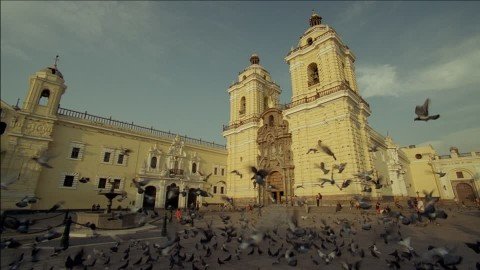 Lima’s architecture is characterized by a mix of styles. Examples of early colonial architecture include the Monastery of San Francisco, the Cathedral of Lima and the Torre Tagle Palace. These constructions are generally influenced by the Spanish Baroque, Spanish Neoclassicism, and Spanish Colonial styles. After independence, there was a gradual shift toward the neoclassical and Art Nouveau styles. Many of these constructions were greatly influenced by French architectural styles. Many government buildings as well as major cultural institutions were contracted in this period. During the 1960s, constructions using the brutalist style began appearing in Lima due to the military government of Juan Velasco Alvarado. Examples of this architecture include the Museum of the Nation and the Ministry of Defense. The 21st century has seen the appearance of glass skyscrapers, particularly around the city’s financial district. There are new architectural and real estate projects.
Lima’s architecture is characterized by a mix of styles. Examples of early colonial architecture include the Monastery of San Francisco, the Cathedral of Lima and the Torre Tagle Palace. These constructions are generally influenced by the Spanish Baroque, Spanish Neoclassicism, and Spanish Colonial styles. After independence, there was a gradual shift toward the neoclassical and Art Nouveau styles. Many of these constructions were greatly influenced by French architectural styles. Many government buildings as well as major cultural institutions were contracted in this period. During the 1960s, constructions using the brutalist style began appearing in Lima due to the military government of Juan Velasco Alvarado. Examples of this architecture include the Museum of the Nation and the Ministry of Defense. The 21st century has seen the appearance of glass skyscrapers, particularly around the city’s financial district. There are new architectural and real estate projects.
The largest parks of Lima are near the downtown area such as the Park of the Reserve, Park of the Exposition, Campo de Marte, and the University Park. The Park of the Reserve is home to the largest fountain complex in the world known as the Magical Circuit of Water. A number of large parks lie outside the city center, including Reducto Park, Pantanos de Villa Wildlife Refuge, El Golf (San Isidro), Parque de las Leyendas (Lima Zoo), El Malecon de Miraflores, and the Golf Los Incas.
The street grid of the city of Lima is laid out with a system of plazas that are similar to roundabouts or junctions. In addition to this practical purpose, plazas serve as one of Lima’s principal green spaces and contain monuments, statues and water fountains.
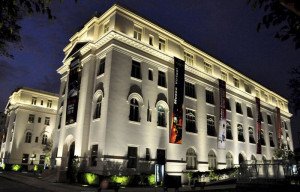 Lima is home to the highest concentration of museums of the country, the most notable of which are the Museo Nacional de Arqueología, Antropología e Historia del Perú, Museum of Art of Lima, the Museo Pedro de Osma, the Museum of Natural History, the Museum of the Nation, The Sala Museo Oro del Perú Larcomar, the Museum of Italian Art, and the Museum of Gold, and the Larco Museum. These museums focus on art, pre-Columbian cultures, natural history, science and religion. The Museum of Italian Art shows European art.
Lima is home to the highest concentration of museums of the country, the most notable of which are the Museo Nacional de Arqueología, Antropología e Historia del Perú, Museum of Art of Lima, the Museo Pedro de Osma, the Museum of Natural History, the Museum of the Nation, The Sala Museo Oro del Perú Larcomar, the Museum of Italian Art, and the Museum of Gold, and the Larco Museum. These museums focus on art, pre-Columbian cultures, natural history, science and religion. The Museum of Italian Art shows European art.
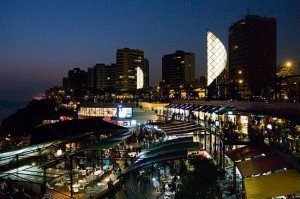 As the major point of entry to the country, Lima has developed a tourism industry, characterized by its historic center, archeological sites, nightlife, museums, art galleries, festivals, and traditions. Lima is home to restaurants and bars where local and international cuisine is served.
As the major point of entry to the country, Lima has developed a tourism industry, characterized by its historic center, archeological sites, nightlife, museums, art galleries, festivals, and traditions. Lima is home to restaurants and bars where local and international cuisine is served.
The Historic Centre of Lima, made up of the districts of Lima and Rímac, was declared a World Heritage Site by UNESCO in 1988. Some examples of colonial architecture include the Monastery of San Francisco, the Plaza Mayor, the Cathedral, Convent of Santo Domingo, the Palace of Torre Tagle, and much more.
A tour of the city’s churches is a popular circuit among tourists. A trip through the central district goes through churches dating from as early as the 16th and 17th centuries, the most noteworthy of which are the Cathedral of Lima and the Monastery of San Francisco, said to be connected by their subterrestrial catacombs. Both of these churches contain paintings, Sevilian tile, and sculpted wood furnishings.
Also notable is the Sanctuary of Las Nazarenas, the point of origin for the Lord of Miracles, whose festivities in the month of October constitute the most important religious event in Lima, and a major one of Peru. Some sections of the Walls of Lima still remain and are frequented by tourists. These examples of medieval Spanish fortifications were built to defend the city from attacks by pirates and privateers.
Beaches are visited during the summer months, located along the Pan-American Highway, to the south of the city in districts such as Lurín, Punta Hermosa, Santa María del Mar (Peru), San Bartolo and Asia. Restaurants, nightclubs, lounges, bars, clubs, and hotels have developed to cater to beachgoers.
The suburban districts of Cieneguilla, Pachacamac, and the city of Chosica, are tourist attractions among locals. Because they are located at a higher elevation than Lima, they receive more sunshine in winter months, something that the city of Lima frequently lacks under seasonal fog.
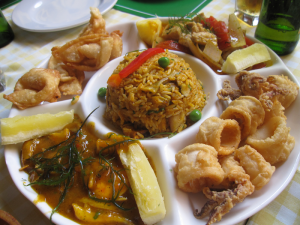 Lima is known as the Gastronomical Capital of the Americas. A center of immigration and the center of the Spanish Viceroyalty, Lima has incorporated dishes brought from the arrival of the Spanish conquistadors and waves of immigrants: African, European, Chinese, and Japanese. Besides international immigration there has been, since the second half of the 20th century, a strong internal flow from rural areas to cities, in particular to Lima. This has influenced Lima’s cuisine with the incorporation of the immigrant’s ingredients and techniques (for example, the Chinese extensive use of rice or the Japanese approach to preparing raw fish). The genres of restaurants in Lima include Creole food, Chifas, Cebicherias, and Pollerias.
Lima is known as the Gastronomical Capital of the Americas. A center of immigration and the center of the Spanish Viceroyalty, Lima has incorporated dishes brought from the arrival of the Spanish conquistadors and waves of immigrants: African, European, Chinese, and Japanese. Besides international immigration there has been, since the second half of the 20th century, a strong internal flow from rural areas to cities, in particular to Lima. This has influenced Lima’s cuisine with the incorporation of the immigrant’s ingredients and techniques (for example, the Chinese extensive use of rice or the Japanese approach to preparing raw fish). The genres of restaurants in Lima include Creole food, Chifas, Cebicherias, and Pollerias.
Lima concentrates a large part of the population native from other regions in the country. In recent history, Lima has positioned itself among a culinary destination for travelers around the world. In many respects, Lima is considered the gastronomical capital of Latin America because its inherited traditions from pre-Hispanic and colonial cultures blended with Western and oriental cooking. In the last few years, not only have restaurants been recognized internationally, Peruvian coffee and chocolate have also won international awards around the world.
In 2014, two restaurants from Lima were awarded within The World’s 50 Best Restaurants: Central was awarded #15 (chefs Virgilio Martinez and Pia Leon) and Astrid & Gaston awarded #18 (chef Diego Muñoz and owned by famous chef Gaston Acurio). This award is one of the most prestigious in the world of culinary arts. A panel of 900 experts defines the winners. In addition, Central was named #1 restaurant in the list of Latin America’s 50 Best Restaurants 2014. Out of the 50 best restaurants in Latin America, Lima is the second city with most awards (after Buenos Aires): Central #1, Astrid & Gaston #2, Maido #7, Malabar #11, La Mar #15, Fiesta #20, Rafael #27, and La Picanteria #31. All of these restaurants represent cooking with fusion from different regions of the country and even the world.
In 2007, the Peruvian Society for Gastronomy was born with the objective of uniting the key actors in Peruvian gastronomy to put together activities that would promote Peruvian food and reinforce the Peruvian national identity. The society, called APEGA, congregated chefs, nutritionists, institutes for gastronomical training, restaurant owners, chefs and cooks, researchers, and journalists. They also worked with universities, food producers, artisanal fishermen and sellers in food markets. One of their first projects was to put together the largest food festival in Latin America to take place in Lima, called Mistura (“mixture” in Portuguese). The fair takes place in September every year since 2008 and the number of attendees has grown from 30,000 the first year to 600,000 in 2014. The entrance ticket cost is about $8.75 and small plates of food inside the fair cost about $5–6. The fair congregates restaurants, food producers, bakers, chefs, street vendors, and cooking institutes from all over the country for ten days to celebrate the country’s excellent food and the variety of ingredients Peru is lucky to produce.
Air
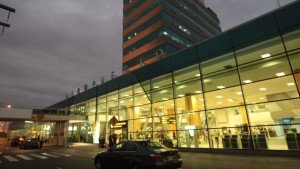 Lima is served by the Jorge Chávez International Airport, located in Callao (LIM). It is the largest airport of the country with the largest amount of domestic and international air traffic. It also serves as a major hub in the Latin American air network. Lima’s Jorge Chávez International Airport is the fourth largest air hub in South America. Additionally, Lima possesses five other airports: the Las Palmas Air Force Base, Collique Airport, and runways in Santa María del Mar, San Bartolo and Chilca.
Lima is served by the Jorge Chávez International Airport, located in Callao (LIM). It is the largest airport of the country with the largest amount of domestic and international air traffic. It also serves as a major hub in the Latin American air network. Lima’s Jorge Chávez International Airport is the fourth largest air hub in South America. Additionally, Lima possesses five other airports: the Las Palmas Air Force Base, Collique Airport, and runways in Santa María del Mar, San Bartolo and Chilca.
Land
Lima is a major stop on the Pan-American Highway. Because of its location on the country’s central coast, Lima is also an important junction in Peru’s highway system. Three of the major highways originate in Lima.
- The Northern Panamerican Highway, this highway extends more than 1,330 kilometers (830 mi) to the border with Ecuador connecting the northern districts of Lima with many major cities along the northern Peruvian coast.
- The Central Highway (Spanish: Carretera Central), this highway connects the eastern districts of Lima with many cities in central Peru. The highway extends 860 kilometers (530 mi) with its terminus at the city of Pucallpa near Brazil.
- The Southern Panamerican Highway, this highway connects the southern districts of Lima to cities on the southern coast. The highway extends 1,450 kilometers (900 mi) to the border with Chile.
The city of Lima has one big bus terminus station located next to the mall Plaza norte in the north of the city. This bus station is the point of departure and arrival of a lot of buses with national and international destinations. There are other bus stations for each company around the city. In addition, there are informals bus stations located in the south, center and north of the city; these bus stations are cheap and confusing, but manageable if you know your destination and have a basic comprehension of Spanish.
Maritime
The proximity of Lima to the port of Callao allows Callao to act as the metropolitan area’s foremost port. Callao concentrates nearly all of the maritime transport of the metropolitan area. There is, however, a small port in Lurín whose transit mostly is accounted for by oil tankers due to a refinery being located nearby. Nonetheless, maritime transport inside Lima’s city limits is relatively insignificant compared to that of Callao, the nation’s leading port and one of Latin America’s largest.
Rail
Lima is connected to the Central Andean region by the Ferrocarril Central Andino which runs from Lima through the departments of Junín, Huancavelica, Pasco, and Huánuco. Major cities along this line include Huancayo, La Oroya, Huancavelica, and Cerro de Pasco. Another inactive line runs from Lima northwards to the city of Huacho.
Public
Eighty percent of the city’s history having occurred during the pre-automobile era, Lima’s road network is based mostly on large divided avenues rather than freeways. Lima has developed a freeway network of nine freeways – the Via Expresa Paseo de la Republica, Via Expresa Javier Prado, Via Expresa Grau, Panamericana Norte, Panamericana Sur, Carretera Central, Via Expresa Callao, Autopista Chillon Trapiche, and the Autopista Ramiro Priale.
According to a survey done in 2012, the majority of the population in Lima uses public or collective transportation (75.6%), while 12.3% uses an individual transport mechanism (such as own car, taxi or motorcycle).
The urban transport system is composed of over 652 transit routes which are served by buses, microbuses, and combis. The system is unorganized and is characterized by the lack of formality. The service is run by 464 private companies which are poorly regulated by the local government. Fares average one sol or US$0.40.
Taxis in the city are mostly informal; they are cheap. There are no meters, so drivers are told the desired destination and the fare is agreed upon before the passenger enters the taxi. Taxis vary in sizes from small four-door compacts to large vans. They are everywhere, accounting for a large part of the car stock. In many cases they are just a private car with a taxi sticker on the windshield. Additionally, there are several companies that provide taxi service on-call.
Colectivos render express service on some major roads of the Lima Metropolitan Area. The colectivos signal their specific destination with a sign on the their windshield. Their routes are not generally publicitized but are understood by frequent users. The cost is generally higher than public transport; however, they cover greater distances at greater speeds due to the lack of stops. This service is informal and is illegal in the city. Some people in the periphery of the city use the so-called “mototaxi” for short distances.
The Metropolitan Transportation System or El Metropolitano is new integrated system for public transportation in Lima consisting in a network of buses that run in exclusive corridors under the Bus Rapid Transit system (BST). The goal of this system of buses is to improve the quality of life of citizens by saving them time in their daily commutes, protecting the environment, providing improved security and quality of service. The Metropolitano was executed with funds from the City of Lima (Municipalidad de Lima) and financing from the Inter-American Development Bank and the World Bank. In contrast to other transit systems in Bogota, Curitiba or Mexico City, the Metropolitana is the first BRT system to operate fueled with natural gas, seeking to contribute to reduce the contamination caused by transit in the city of Lima. This system links the principal points of the Lima Metropolitan Area. The first phase of this project has 33 kilometres (21 mi) of line from the north of the city to Chorrillos in the south of the city. It began commercial operations on July 28, 2010. Since 2014, Lima Council operates the “Sistema Integrado de Transporte Urbano” (Urban integrated transport system), which comprises brand-new buses all over Avenida Arequipa. By the end of 2012, the Metropolitano system counted with 244 buses in its central routes and 179 buses in its feeding routes. That is, a total float of 423 buses in operation. In one weekday 437,148 people use the system. The amount of users has increased from 2011 in 28.2% for weekdays, 29.1% for Saturdays, and 33.3% for Sundays.
The Lima Metro has twenty six passenger stations, located at an average distance of 1.2 km (0.7 miles). It starts its path in the Industrial Park of Villa El Salvador, south of the city, continuing on to Av. Pachacútec in Villa María del Triunfo and then to Av. Los Héroes in San Juan de Miraflores. Afterwards, it continues through Av. Tomás Marsano in Surco to reach Ov. Los Cabitos, to Av. Aviación and then cross the river Rimac to finish, after almost 35 km (22 mi) , in the east of the capital in San Juan de Lurigancho The system counts with five trains, each with six wagons. Each wagon has the capacity to transport 233 people. The metro system began operating in December 2012 and transported 78,224 people on average on a daily basis.

